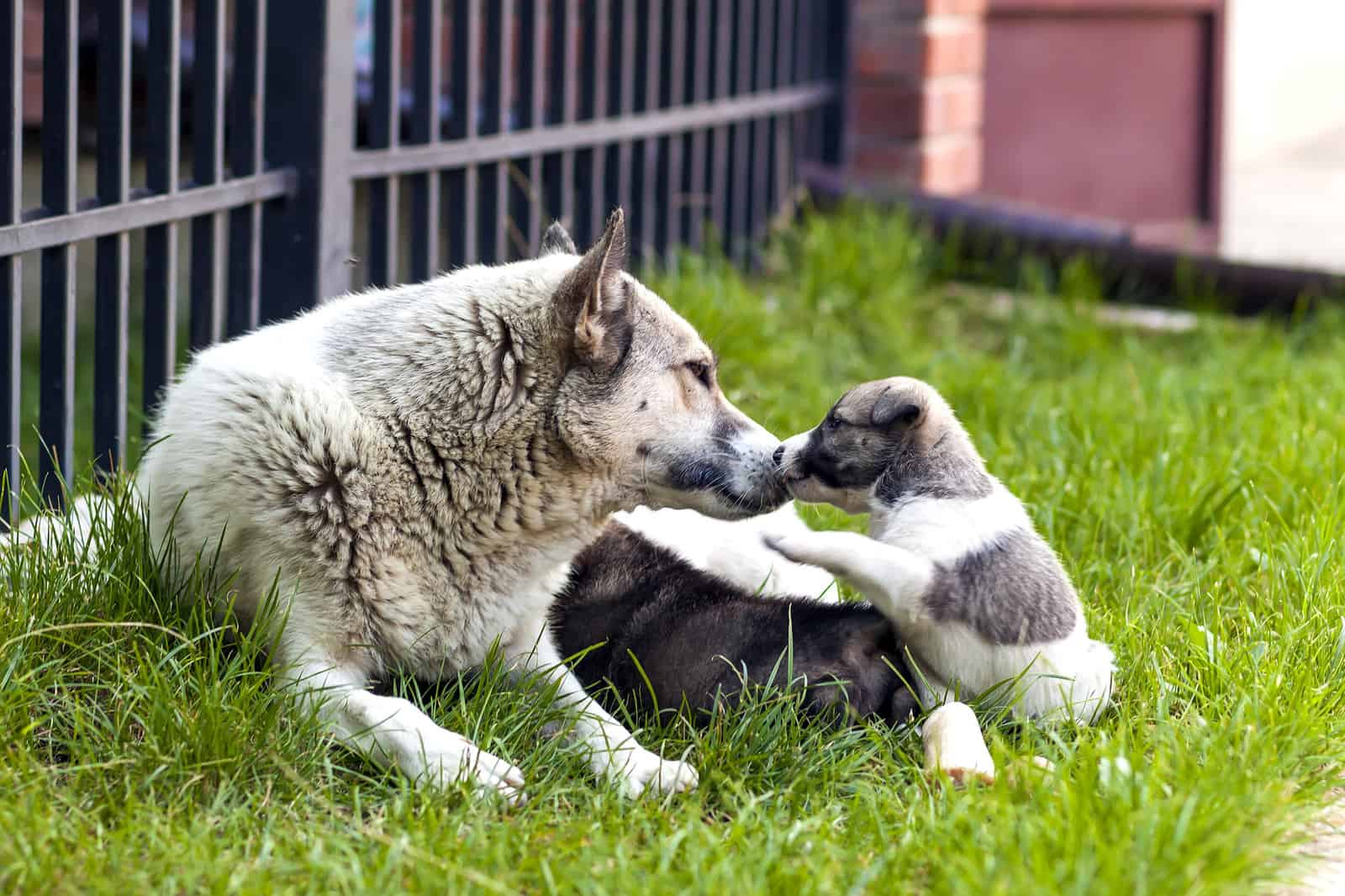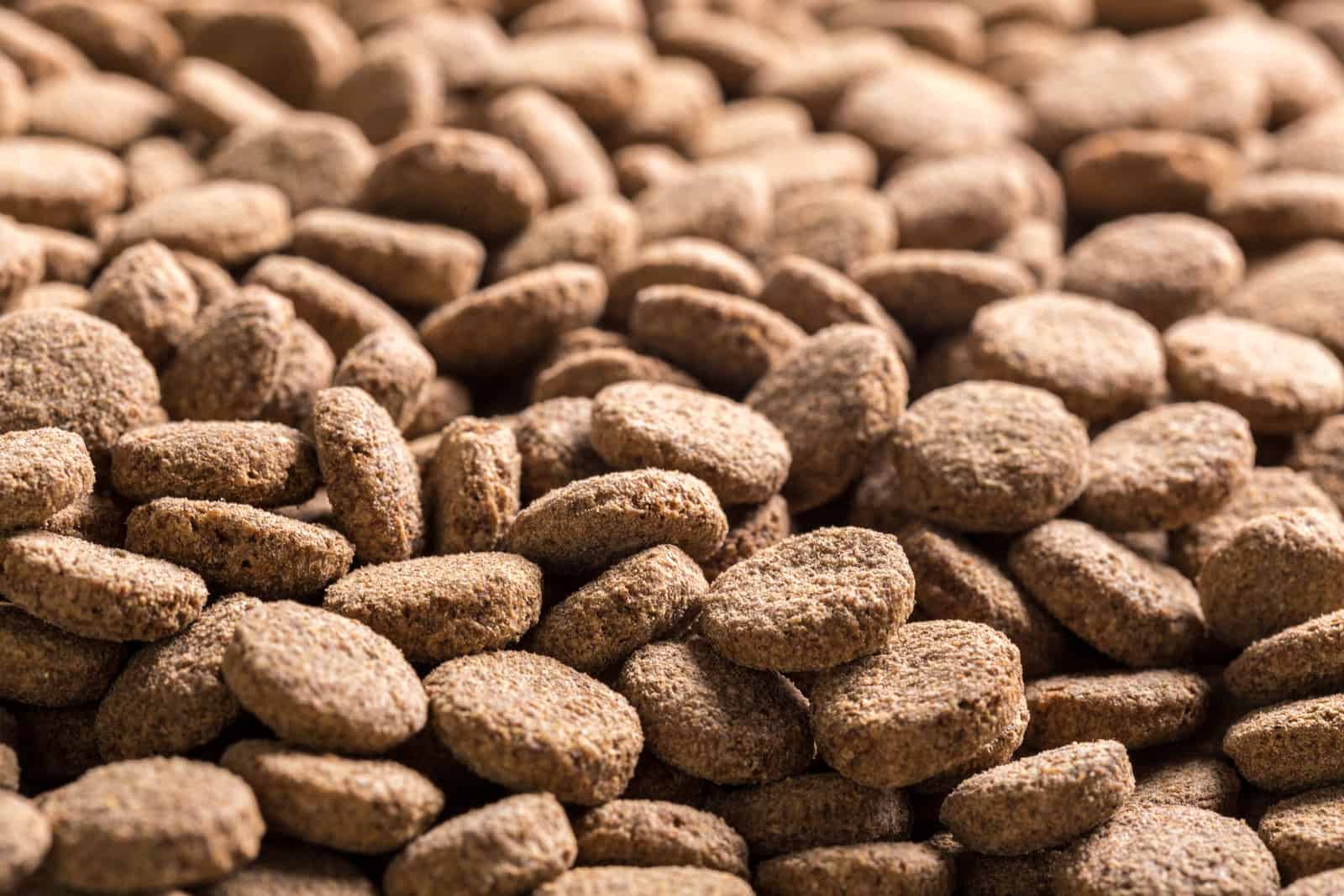
Which Dog Food is Best for Your Pet?
Dog food is something you might say about any food your fluffy dog eats, but the question is, what food are you feeding your dog? Is there special dog food? or do they eat whatever they can get their paws on and call it dog food?
Dogs are known to be very loyal; they are a bundle of joy in the house, and when they see you, they become very happy and begin wagging their tail. Let’s say you have a new puppy, or you already have a dog, and you’re wondering if you should share your food with them, if it will harm them, or if they have their own dog food.
Dogs, like humans, require nutrition and healthy food, and certain foods are harmful to them. Suppose you need clarification about what to feed your four-legged best friend. We will help you figure out which dog foods are safe for your dog that they can enjoy and which are toxic and best to avoid.
So, let’s learn more about what you can feed your dog, and don’t worry, after reading this, you’ll have a happy dog with a happy belly.

The Difference Between a Puppy and an Adult Dog
Puppies and adult dogs have different are different as they have different nutritional needs, which is why there is a dry dog food specifically for puppies, teenagers, and adults. In addition, each stage is different and requires different nutrition to help them grow.
Any dog, regardless of age, requires the following proteins, fats, carbs, fibres, minerals, and vitamins in their food. Based on their bodies’ nutrition, they may need something more than the other at each stage.
Newborn puppy nutrition requirements
Newborn puppies, like babies, require only milk and do not consume any other dog food. They can drink either their mother’s milk or a milk substitute. They will eventually wean from their mother’s milk or a substitute liquid and begin digesting solids.
Begin weaning them by temporarily removing the mother from the area where the mother stays with her puppies and introducing them to puppy food in a dish while the mother is away. Gradually introduce this until they become accustomed to it. Just remember not to force them to eat; at the end of the day, you need to be gentle with your furry best friend.
Young puppy nutrition requirements
After weaning, dogs will get all their nutrition from dog food, so choose something tasty and healthy. Young puppies require a lot of protein to help them grow into healthy pup.
Puppies may also require three to four smaller meals per day at first before gradually transitioning to two larger meals per day. If you are unsure how often to feed your dog, it is best to consult your vet to determine the best feeding regimen for your fluff.
An important tip is that if dry food is difficult for your puppy to chew, you can slightly moisten it to make it easier for your dog to chew.

Adult dog nutrition requirements
The majority of dogs reach adulthood around the first year. A highly active dog, for example, will have different nutritional requirements than a less active lap dog.
The dog’s size also matters; a big dog breed requires more dog food than a small dog breed. In addition, other factors, such as temperature, will influence your dog’s diet changes. For example, extreme heat and cold will burn more energy from your dog, which will have to be considered in their diet. Finally, a change in activity, such as beginning an exercise routine, will alter the amount or type of food you provide your dog.
7+ dog nutrition requirements
The mature years are between the ages of 7 and 12. While your dog is still energetic and likely enjoys playing and exercising with you, you may notice that they are slowing down and are not as active as they once were.
Dogs, like humans, slow down as they age. Because your dog’s metabolism has slowed at this point in their life, they require more nutrients devoted to healthy organs, bone, and muscle maintenance and more tasty dog food. To help them stay healthy.
5 Frequently Asked Questions About Dog Food
We all know how much you love your furry best friend, and you may have a lot of questions about their food. So we decided to answer them all.
- What are the different types of dog food?
Dog food is classified into five categories:
- Kibble/Dry
Dry food is the most popular and widely used among dog owners for various reasons, including It lasts a long time, and the best thing about it is it does not need to be stored in the refrigerator. Dry food can also help keep your dog’s pearly white teeth healthy because chewing crunchy dry food helps to reduce tartar buildup.
A tip: When choosing a specific dry dog food, carefully read the ingredients and pick a brand that uses wholesome food, as it is healthier for your dog.

- Canned
Most dogs enjoy canned food, but owners have mixed feelings about it because it is a bit pricey. The disadvantage is that only some commercially canned food brands contain the protein your dog requires.
A tip: When choosing canned food for your dog, look for something labelled “100% nutritionally complete.” Because most canned food is about 75% water.
A reminder when buying canned food, the higher the water content, the less nutrient content, and thus the more food your dog must eat in order to get the nutrition its body requires.
- Semi-Moist
Semi-moist foods are those shaped like burgers, pork chops, or other meaty foods. These foods are the least nutritious and unhealthy of all dog foods and contain a lot of unwanted artificial flavours and colourings. Therefore, they are not the healthiest option for your dog because they do not provide the nutrition your fluffy friend requires, but you can give them as a treat on occasion.
- Home Cooked
Nothing beats a home-cooked meal, and some dog owners prefer to cook for their dogs to know exactly the nutrition in everything their dog eats and to ensure that their nutritional needs are met.
Feeding your dog a home-cooked diet takes energy and money, but many dog parents believe the extra effort is worth it. If you have made up your mind and decided to feed your dog a healthy home-cooked diet, make sure you understand dog nutrition, so you don’t deprive your dog of essential nutrients.
- Raw
The name tells you what we’re talking about: raw meat that is never cooked, including bones and organs. It is a natural source of phosphorus and calcium, and bones.
This type of diet may seem disgusting to you, but it works well for your dog because dogs have short intestinal tracts and strong stomach acids; in other words, it allows them to consume and digest raw food easily.
A tip: Before transitioning your dog to a raw diet, consult your vet about the benefits and risks of keeping your dog healthy and happy.
- What is the best human food for dogs?
There are 10 foods that your dog will enjoy just as much as you will.
- Chicken
Mix some chicken with its regular food to add spice and extra protein to your dog’s diet. The key is to keep it simple: no sauces, seasonings, marinades, or anything else.
Also, always separate the chicken from the bone before giving it to your dog. Dogs can also eat meats, including pork, rabbit, lamb, and duck.
However, never feed your dog processed meats such as bacon, sausage, pepperoni, or other deli meats.
- Peanut butter
Peanut butter is a yummy and healthy, and safe treat for dogs. However, it is best to use moderate amounts of peanut butter for your dog. Peanut butter is high in protein, niacin, healthy fats, vitamin B, and vitamin E, among other nutrients.
Peanut butter is high in calories, so limit your dog’s intake. If your dog eats too much and too frequently, it may gain weight and become chubbier; there is nothing wrong with chubby dogs, but it is not healthy for them. Additionally, because salt and artificial sweeteners, particularly xylitol, are toxic to your furry friend, feed your dog plain, unsalted peanut butter.
- Apples
When feeding apples to your dog, make sure to cut the fruit into slices rather than whole apples, and keep stems, pits, and seeds away from your dog. Apples are high in vitamins, minerals, and antioxidants which may help your dog’s digestion.
- Carrots
Carrots have numerous benefits for your dog and are low in calories. In addition, carrots are an excellent choice for treats for overweight dogs.
Chewing raw carrots is also good for your dog’s teeth, and don’t forget about the vitamin A, beta-carotene, and fibre in it. Carrots are great for dogs because carrots are very easy to make and can be fed cooked or raw.
- Blueberries
Blueberries have numerous health benefits, including disease-fighting antioxidants, phytochemicals, vitamins, minerals, and fibre.
The best thing about blueberries is that they are a whole package, low in calories and small in size, making them ideal training treats.
Any berries, such as strawberries, raspberries, and blackberries, can be used, but not in excess; a moderate amount of each is preferable.
- Cheese
Cheese is an excellent treat for your dog, but dogs, like humans, may be lactose intolerant, so start with small amounts and monitor their reaction; if nothing happens, give them all the cheese they want; if you notice any changes, consult your vet. Cheese contains a lot of protein and calcium and is very easy to digest. Mozzarella, cheddar, and cottage cheese are all excellent options for your hungry pup.
- Plain Yoghurt
Another dairy treats to try before giving to your dog. Yoghurt is high in protein, calcium, and digestive cultures and is a great way to improve your dog’s digestive health. Remember, a happy tummy equals a happy doggy. Make sure to feed your dog plain yoghurt with no artificial sweeteners or flavours.
- Salmon
Salmon is a good choice for your dog’s coat, skin and immune system. This is because it contains a lot of protein and omega-3 fatty acids.
However, you should avoid giving raw salmon to your dog. It could contain a parasite that causes salmon poisoning, which can be fatal.
- Pumpkin
Pumpkin is high in both vitamin A and fibre. For dogs with sensitive stomachs or digestive issues, canned pumpkin or fresh, cooked pumpkin with no added sugars or spices is an excellent choice.
- Sweet potato
Cooked plain sweet potatoes are a great addition to your dog’s diet because they are high in fibre, beta-carotene, and vitamins B-6 and C. You can mix them into your dog’s regular food or give them as a treat to help your pup’s digestive system.
- What are the top 5 toxic foods for dogs?
Some yummy food for humans and dogs is healthy, but some are unhealthy and toxic, which is best to be avoided, such as the following 5 which is best to be avoided.
- Onions, Garlic and Chives
It is best to keep your dog away from it because the onion family is particularly toxic to dogs, whether dry, raw or cooked. It can cause gastrointestinal irritation and red blood cell damage.
- Chocolate
Chocolate is another poisonous food for dogs, so just because you like it doesn’t mean you have to feed it to your dog. Dark chocolate contains the highest concentration of theobromine, a stimulant that is toxic to dogs and can cause your poor doggy kidney failure.
- Avocado
Another fruit that is healthy for you but not for your dog, Avocados are another poisonous food for dogs. Avocado plants contain Persin, which can sadly cause vomiting and diarrhoea in doggies.
- Corn on the Cob
If your dog eats corn on the cob, it could be fatal. Although dogs can digest corn, the cob can cause a blockage in their intestine.
- Cooked Bones
We previously stated that raw bones are healthy for dogs; however, cooked bones can easily shatter and, in large quantities, cause constipation or, worse, a puncture of the gut, which can be life-threatening and is best to avoid.
- Which fruits are safe for dogs to eat?
In the summer, as much as you enjoy some fruits in the hot weather, you can share them with your dog and remember the fruits you and your dog can eat in the winter. Here is a list of 14 fruits that are safe for your dog to enjoy.
- Apples
- Bananas
- Blueberries
- Cantaloupe
- Cranberries
- Cucumbers
- Mango
- Oranges
- Peaches
- Pears
- Pineapple
- Raspberries
- Strawberries
- Watermelon
- What are the top 5 Dry Dog Food Types?
- Paleo Ridge
- Forthglade Natural Dry Cold Pressed Dog Food
- Pure Pet Food
- Butternut Box
- Tails.com Dry Dog Food
By Now, You Know What to Feed Your Dog
So, if you were unsure about what to feed your fluffy friend, you are now a doggy-feeding expert and you know all about the dog food out there. The question is, what do you feed your dog first? Just remember, no sugar!
If you enjoyed learning about this facinating animal why not check out more fantastic facts about other animals: Koalas, Land Animals, Sharks, Raccoons, Moon and Sun Bears, Rats, Chickens, Cats, Pandas, Monkeys and Whales.
Why not subscribe to our LearningMole Library for as little as £1.99 per month to access over 1000 fun educational videos.


Leave a Reply